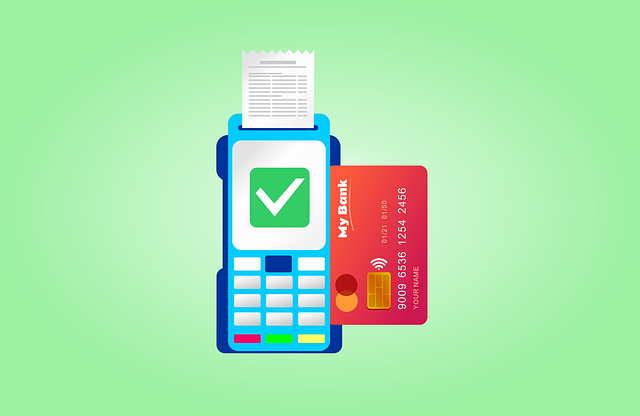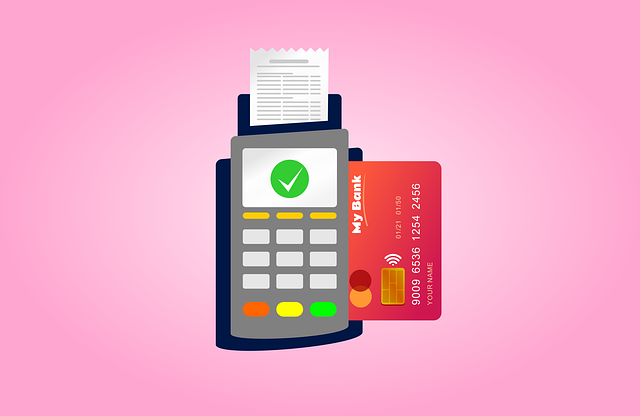TL;DR:
Invoice financing offers businesses a flexible, collateral-free funding option by using outstanding invoices as security. It provides swift access to capital, benefits SMEs, and has no impact on credit scores. However, it comes with varying interest rates, fees, and potential risks like late client payments. Businesses should thoroughly understand the process, compare providers, and weigh pros (like quick cash flow) against cons (like higher costs) before applying to ensure a suitable solution tailored to their needs. Key terms include invoice financing benefits, vs loans, process, providers, and pros/cons.
Looking to boost your cash flow and accelerate business growth? Invoice financing could be the key. This article guides you through the process of choosing an invoice financing provider, delving into its benefits over traditional loans and exploring how it works step-by-step. Weigh the pros and cons, learn strategic application tips, and unlock cash flow opportunities with the right provider for your needs.
- Understanding Invoice Financing: Unlocking Cash Flow Opportunities
- Invoice Financing Benefits: Accelerating Payment and Growing Your Business
- Invoice Financing vs Traditional Loans: Weighing Your Options
- How Invoice Financing Works: A Step-by-Step Guide
- Pros and Cons of Invoice Financing: Making Informed Decisions
- Applying for Invoice Financing: A Strategic Approach to Secure Funding
Understanding Invoice Financing: Unlocking Cash Flow Opportunities

Invoice financing is a powerful tool that offers businesses an alternative way to access working capital and improve their cash flow. Unlike traditional loans, which often require collateral and strict credit checks, invoice financing leverages your outstanding invoices as collateral. This process provides a more flexible and efficient solution for businesses seeking immediate financial support. By selling these invoices to a financier at a discount, companies can receive a significant cash injection almost instantly.
This type of financing is particularly beneficial for small and medium-sized enterprises (SMEs) that may struggle with limited access to bank loans. It offers several advantages, including faster funding, no personal guarantees required, and the ability to maintain control over sales processes. However, there are also considerations like interest rates and fees, which can vary among providers. Understanding how invoice financing works and comparing different provider offerings will help businesses make informed decisions when applying for this type of financial support, ensuring they choose the best option for their unique needs.
Invoice Financing Benefits: Accelerating Payment and Growing Your Business

Invoice financing offers businesses a powerful tool to accelerate cash flow and support growth. By utilizing this funding method, companies can access working capital tied to their outstanding invoices—a game-changer for those dealing with lengthy payment terms from clients. Unlike traditional loans that often require collateral, invoice financing is based on the strength of your accounts receivable. This means you can tap into immediate funds without putting up assets as security, providing a faster and more flexible alternative to bank loans.
How it works is relatively straightforward: You sell your invoices (or accounts receivable) to an invoice financing provider at a discount, receiving a lump sum upfront. The provider then collects the full amount from your clients when due, minus their fee. This method not only speeds up cash flow but also provides businesses with a way to manage cash flow peaks and valleys, making it especially useful for small and medium-sized enterprises (SMEs) looking to expand or navigate seasonal fluctuations. However, as with any financing option, there are pros and cons; careful consideration is needed when comparing invoice financing vs. loans to ensure it aligns with your business’s unique needs.
Invoice Financing vs Traditional Loans: Weighing Your Options

When considering funding options for your business, understanding the differences between invoice financing and traditional loans is crucial. While both serve as a means to access capital, they operate quite differently, offering distinct advantages and considerations.
Invoice financing provides a flexible approach where providers advance funds against outstanding invoices. This method aligns perfectly with the cash flow needs of businesses as it taps into their receivables. Unlike traditional loans that require collateral and strict repayment schedules, invoice financing focuses on the creditworthiness of the customer’s invoices. It’s an attractive option for businesses seeking short-term funding without the burden of long-term debt, making it a popular choice among startups and growing enterprises. The process is straightforward; you apply, the provider assesses your invoices’ value and advances funds, and once the invoices are paid, the financing provider collects their share. This efficient system offers numerous invoice financing benefits, such as quick access to cash, no impact on business credit scores, and potential cost savings compared to traditional loans. However, it’s essential to weigh the pros and cons of invoice financing; for instance, interest rates might be higher, and late payments can incur penalties, impacting cash flow.
How Invoice Financing Works: A Step-by-Step Guide

Invoice financing is a powerful tool that allows businesses to access cash flow by converting their outstanding invoices into immediate funding. It offers numerous benefits, especially when compared to traditional loans. Unlike loans, which are often based on personal credit and have fixed interest rates, invoice financing provides flexible terms tailored to your business’s needs. The process typically involves several steps:
1. Eligible Invoices: First, you identify invoices that meet specific criteria, such as being unpaid and within a defined timeframe. These invoices serve as collateral for the funding.
2. Apply for Financing: You then approach an invoice financing provider, who will review your business details, including financial history and outstanding invoices. This step involves submitting necessary documents like invoices, accounts receivable ledgers, and business financial statements.
3. Funding Disbursement: Upon approval, the provider advances a percentage of the total invoice value, minus any fees. This cash injection can be used for various business purposes, from operational costs to expansion plans.
4. Collection Assistance: The provider takes over the collection process, ensuring timely payments from your clients. They may offer credit insurance to protect against non-payment risks.
5. Repayment: Repayment typically occurs when the client settles the invoice, with the outstanding balance deducted from their payment. This ensures a seamless cash flow management system without long-term debt obligations.
When considering invoice financing, weigh the pros and cons carefully. Benefits include improved cash flow, no personal guarantees required, and terms aligned with your business cycle. However, watch out for potential drawbacks like fees and interest charges, which can vary among providers.
Pros and Cons of Invoice Financing: Making Informed Decisions

Invoice financing can be a powerful tool for businesses looking to access cash flow, but it’s not without its advantages and disadvantages. Understanding these pros and cons is crucial when making an informed decision about whether this funding method is right for your business.
One of the main benefits of invoice financing is that it provides a flexible alternative to traditional loans. It allows businesses to tap into their outstanding invoices, which are often an untapped source of capital. This method can help maintain cash flow and avoid the need for collateral, making it particularly appealing for smaller businesses or those with limited assets. However, there are also drawbacks to consider. Interest rates on invoice financing can be higher than traditional loans, and late payments from clients can significantly impact your cash flow. Additionally, applying for invoice financing may require more extensive documentation and a good credit history compared to other forms of funding. Weighing these factors will help you determine if the potential benefits of invoice financing outweigh the cons for your business needs.
Applying for Invoice Financing: A Strategic Approach to Secure Funding

Applying for invoice financing is a strategic approach to securing funding that offers numerous benefits tailored to businesses with strong receivables. Unlike traditional loans, which often require collateral and strict eligibility criteria, invoice financing focuses on the value of your outstanding invoices. This makes it an attractive option for companies seeking flexible funding without compromising their assets.
When exploring how invoice financing works, it’s essential to understand the process. Businesses sell their invoices (unpaid customer accounts) at a discount to specialized providers, receiving immediate cash flow. These providers then collect the full amounts from customers as per the original terms. This model provides quick access to capital, improves cash flow management, and offers better interest rates compared to loans. However, it’s crucial to weigh the pros and cons of invoice financing, considering factors like fees, potential impact on customer relationships, and the need for efficient accounts receivable management to ensure a successful application and long-term benefits.






